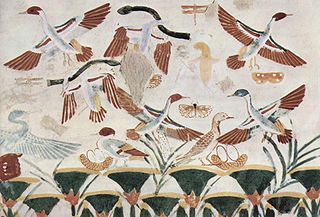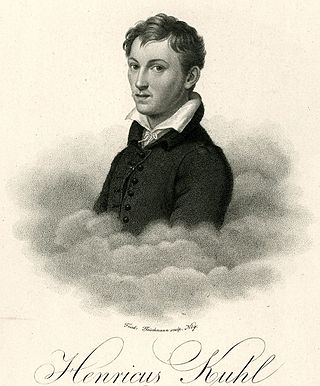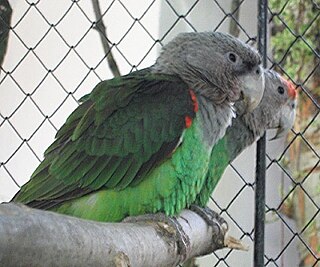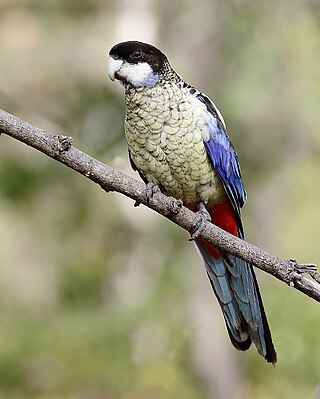
Coenraad Jacob Temminck was a Dutch patrician, zoologist and museum director.

The following is a timeline of ornithology events:

Heinrich Kuhl was a German naturalist and zoologist.

François Levaillant was a French author, explorer, naturalist, zoological collector, travel writer, and noted ornithologist. He described many new species of birds based on birds he collected in Africa and several birds are named after him. He was among the first to use colour plates for illustrating birds and opposed the use of binomial nomenclature introduced by Carl Linnaeus, preferring instead to use descriptive French names such as the bateleur for the distinctive African eagle.

The red-capped parrot is a species of broad-tailed parrot native to southwestern Australia. It was described by Heinrich Kuhl in 1820, with no subspecies recognised. It has long been classified in its own genus owing to its distinctive elongated beak, though genetic analysis shows that it lies within the lineage of the Psephotellus parrots and that its closest relative is the mulga parrot. Not easily confused with other parrot species, it has a bright crimson crown, green-yellow cheeks, and a distinctive long bill. The wings, back, and long tail are dark green, and the underparts are purple-blue. The adult female is very similar though sometimes slightly duller than the male; her key distinguishing feature is a white stripe on the wing under-surface. Juveniles are predominantly green.

The western rosella, or moyadong, is a species of parrot endemic to southwestern Australia. The head and underparts are bright red, and the back is mottled black; a yellow patch at the cheek distinguishes it from others of the genus Platycercus. Adults of the species exhibit sexual dimorphism with the females duller overall; juveniles lack the striking colours of mature birds and the characteristic patterning is not as easily distinguished. Their communication call is a softly delivered pink-pink sound, and much of their behaviour is comparatively unobtrusive. Their habitat is in eucalypt forests and woodlands, where they often remain unobserved until they appear to feed on seeds at nearby cleared areas.

The brown-necked parrot, sometimes known in aviculture as the uncape parrot, is a large Poicephalus parrot species endemic to Africa.

The green rosella or Tasmanian rosella is a species of parrot native to Tasmania and Bass Strait islands. It was described by the German naturalist Johann Friedrich Gmelin in 1788, and named on the mistaken assumption it came from New Caledonia. At 14.5 in (37 cm) long it is the largest species of the rosella genus, Platycercus. Two subspecies are recognised. The green rosella's underparts, neck and head are yellow, with a red band above the beak and violet-blue cheeks. The back is mostly black and green, and its long tail blue and green. The sexes have similar plumage, except the female has duller yellow plumage and more prominent red markings, as well as a smaller beak. Juvenile and immature birds have predominantly green plumage.

The northern rosella, formerly known as Brown's rosella or the smutty rosella, is a species of parrot native to northern Australia, ranging from the Gulf of Carpentaria and Arnhem Land to the Kimberley. It was described by Heinrich Kuhl in 1820, and two subspecies are recognised. The species is unusually coloured for a rosella, with a dark head and neck with pale cheeks—predominantly white in the subspecies from the Northern Territory and blue in the Western Australian subspecies hillii. The northern rosella's mantle and scapulars are black with fine yellow scallops, while its back, rump and underparts are pale yellow with fine black scallops. The long tail is blue-green, and the wings are black and blue-violet. The sexes have similar plumage, while females and younger birds are generally duller with occasional spots of red.

The blue-winged parrot, also known as the blue-banded parakeet or blue-banded grass-parakeet, is a small parrot found in Tasmania and southeast mainland Australia. It is partly migratory, with populations of blue-winged parrots travelling to Tasmania for the summer. The parrot is sexually dimorphic – the males have more blue on the wings and a two-toned blue frontal band on the head, while females are duller and have more green on the wings and a wingbar. Both sexes have predominantly olive-green plumage. Predominantly a feeder on the ground, the blue-winged parrot mainly eats seeds of grasses. It adapts readily to captivity.
Jean-Gabriel Prêtre was a Swiss-French natural history painter who illustrated birds, mammals and reptiles in a large number of books. Several species of animal were named after him.










